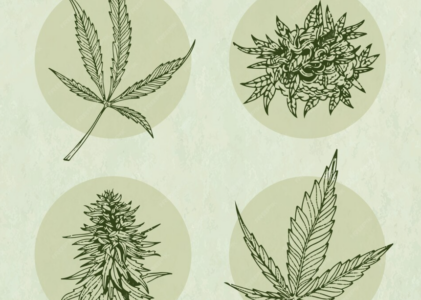In 2021, researchers published a new study method: genome sequencing. They recreated the domestication history of Cannabis by comparing the genomes of 110 plants from around the world – including feral lineages and those grown for both hemp and drug. By looking at the genetic differences between the plants and using molecular dating to work backward, they were able to pinpoint a single origin of Cannabis domestication in what’s now China around 12,000 years ago. This makes cannabis one of the oldest known domesticated plants, dating back to the agricultural revolution. For reference, cannabis was domesticated before staples such as wheat, corn, and potatoes. The genomic analysis also revealed that early cultivated cannabis was likely employed as a multi-purpose crop, with the hemp and drug-type lineages only genetically distinct roughly 4000 years ago. Populations began intentionally breeding various lineages for two distinct objectives, leaving a significant evidence of divergent selection in the genomes of each kind. The researchers were even able to identify selection signals on individual genes that account for the two types’ distinct characteristics. For example, consider the genes that cause hemp-type cannabis to have taller, unbranched stems with higher fiber content. In contrast, the genes responsible for the shorter, branching stems of drug-type cannabis with woodier cores, more flowers, and more resin output. After these two cannabis types diverged around 4000 years ago, we started to find clear archeological evidence of people using both types throughout Eurasia and beyond. Multiple fiber artifacts from hemp-type cannabis appeared in East Asia around this time and spread westward into Europe and the Middle East. Written evidence from India indicates that people were using drug-type cannabis as far back as 2000 years ago – with it reaching Africa by the 13th century and Latin America by the 16th century.

